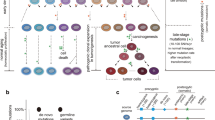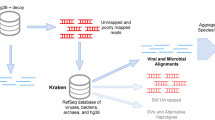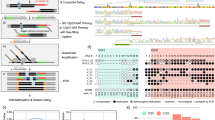Abstract
INTERSPECIFIC cell culture contamination has been detected several times by karyotypic and immunological procedures1–3. These same measurements are of little value as detectors of intraspecific contamination, but polymorphic variants detectable at the cell culture level can be very useful for this purpose, A survey of twenty heteroploid human cell lines for glucose-6-phosphate de-hydrogenase (G6PD) and phosphoglucomutase (PGM) electrophoretic polymorphisms revealed that all had the same G6PD and PGM phenotypes. These results were interpreted as reflecting widespread contamination of cultures by the first established human cell line HeLa. These findings were presented at the Second Decennial Review Conference on Cell Tissue and Organ Culture4 and have since been extended to include other American Type Culture Collection lines. Further evidence on the stability of these markers in various conditions has been obtained, and in view of the widespread use of cell lines in a variety of investigations it seems important to make these findings readily accessible to other workers.
This is a preview of subscription content, access via your institution
Access options
Subscribe to this journal
Receive 51 print issues and online access
$199.00 per year
only $3.90 per issue
Buy this article
- Purchase on Springer Link
- Instant access to full article PDF
Prices may be subject to local taxes which are calculated during checkout
Similar content being viewed by others
References
Rothfels, K. H., Axelrad, A. A., Siminovitch, L., McCulloch, E. A., and Parker, R. C., in Proc. Third Canadian Cancer Res. Conf. 1958 (edit. by Begg, R. W.), 189 (Academic Press, 1959).
Defendi, V., Billingham, R. E., Silvers, W. K., and Moorhead, P., J. Nat. Cancer Inst., 25, 359 (1960).
Brand, K. G., and Syverton, J. T., J. Nat. Cancer Inst., 28, 147 (1962).
Gartler, Stanley M., Nat. Cancer Inst. Mono., 26, 167 (1967).
Gartler, S. M., and Linder, D., Symp. Quant. Biol., 29, 253 (1964).
Author information
Authors and Affiliations
Rights and permissions
About this article
Cite this article
GARTLER, S. Apparent HeLa Cell Contamination of Human Heteroploid Cell Lines. Nature 217, 750–751 (1968). https://doi.org/10.1038/217750a0
Received:
Issue Date:
DOI: https://doi.org/10.1038/217750a0
This article is cited by
-
Cytochrome B5 type A alleviates HCC metastasis via regulating STOML2 related autophagy and promoting sensitivity to ruxolitinib
Cell Death & Disease (2022)
-
Characterization of a new case of XMLV (Bxv1) contamination in the human cell line Hep2 (clone 2B)
Scientific Reports (2020)
-
Major changes of cell function and toxicant sensitivity in cultured cells undergoing mild, quasi-natural genetic drift
Archives of Toxicology (2018)
-
Best practices for naming, receiving, and managing cells in culture
In Vitro Cellular & Developmental Biology - Animal (2017)
-
Formation of Nup98-containing nuclear bodies in HeLa sublines is linked to genomic rearrangements affecting chromosome 11
Chromosoma (2016)
Comments
By submitting a comment you agree to abide by our Terms and Community Guidelines. If you find something abusive or that does not comply with our terms or guidelines please flag it as inappropriate.



